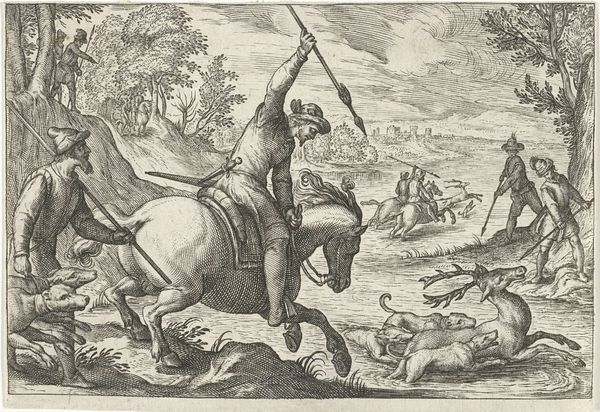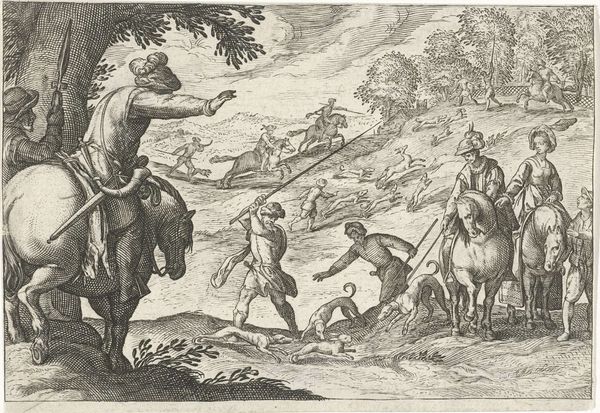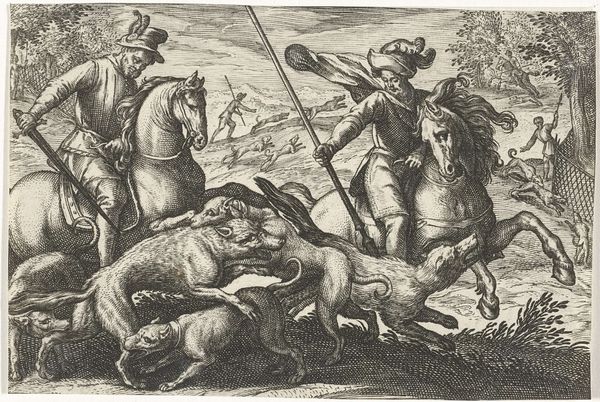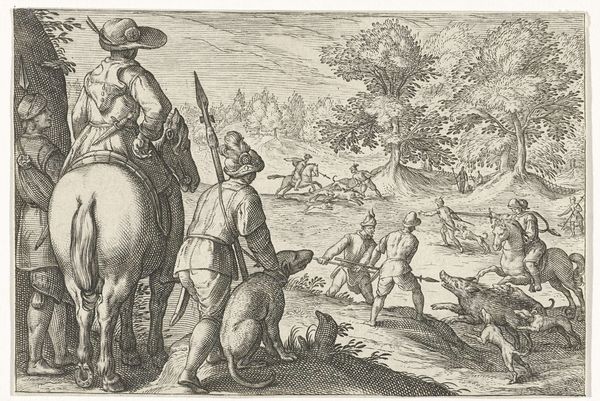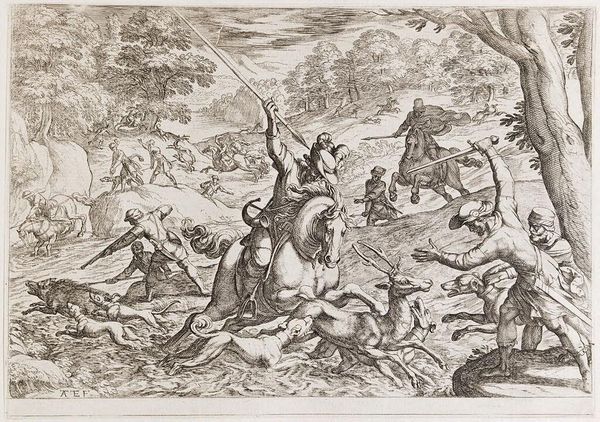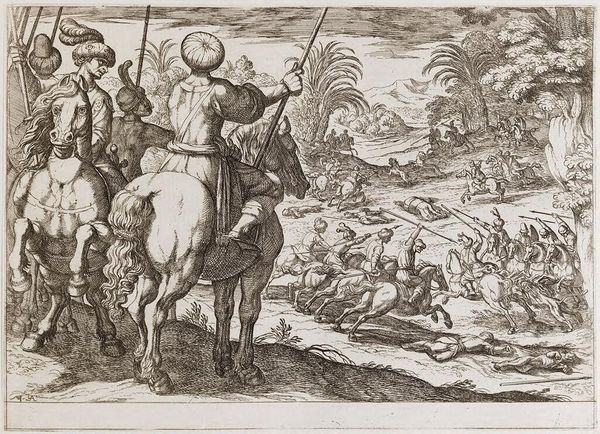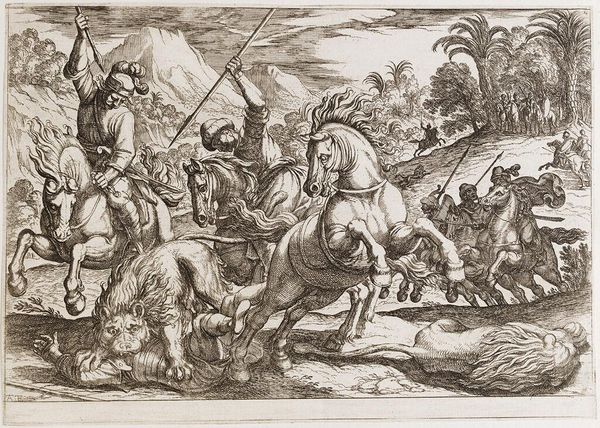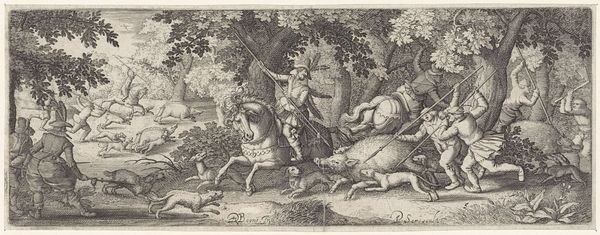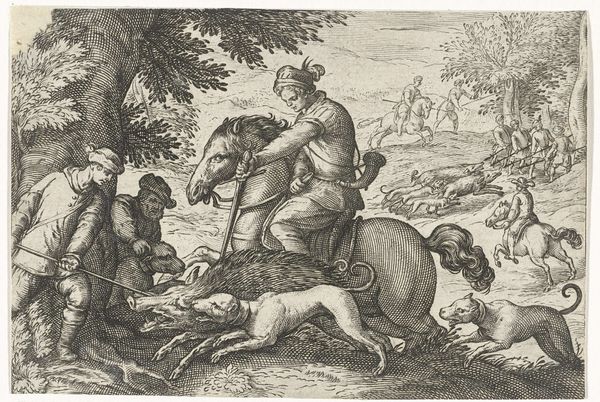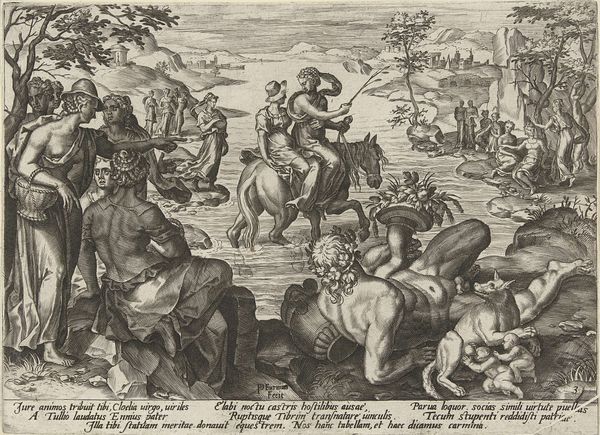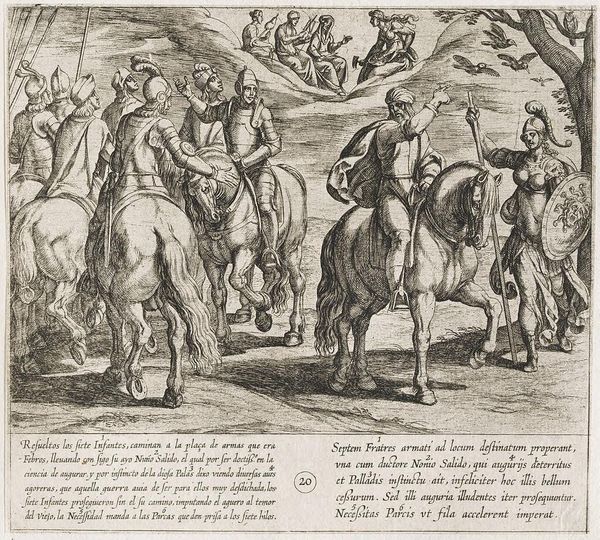
print, engraving
#
dutch-golden-age
# print
#
landscape
#
figuration
#
genre-painting
#
engraving
#
realism
Dimensions: height 85 mm, width 120 mm
Copyright: Rijks Museum: Open Domain
Curator: Looking at Egbert Jansz’s “River Landscape with Deer Hunt,” created around 1598, I’m immediately struck by the implied violence and chaos. It’s not just a simple hunting scene; it’s an aggressive clash between humanity and nature rendered in delicate lines. Editor: Yes, the dynamism is undeniable. I notice how Jansz employs hatching and cross-hatching to model form and create tonal variation, which helps convey the movement. Note, also, the deliberate use of scale; how the figures at the periphery establish spatial depth, enhancing the sense of immersive action. Curator: Beyond its technical aspects, let’s consider the sociopolitical context. This image speaks to the aristocracy's control over land and resources, illustrating a narrative of power and dominance. Hunting wasn't merely a sport; it was a visual demonstration of privilege, inaccessible to the vast majority of the population. Editor: That's an insightful perspective, and I agree, the themes present transcend simple reportage. However, it's difficult to not be fascinated with how light glances off the water. Did the artist want to reflect and celebrate an age of exploration by depicting waterways? Curator: Perhaps. I read the body language differently, however, especially of the animals. What story about dominance and violence in early Dutch society does this narrative tell? I suspect, that while the artist was working in a commercial form (printmaking) and hoping to court an audience, it can also show the historical development of class dynamics and societal pressures as well. Editor: Indeed. It underscores the complex layering of meaning embedded in seemingly straightforward imagery, demonstrating how visual structure reinforces thematic resonance. It's almost as though the entire world of social structures has been recreated with each precise engravure. Curator: I agree completely, especially about how we look to older eras. Examining such an old work reveals ways historical conditions still echo in today's world. Editor: Seeing that complexity evolve through the simple details of a single, static piece is almost magical to consider.
Comments
No comments
Be the first to comment and join the conversation on the ultimate creative platform.
